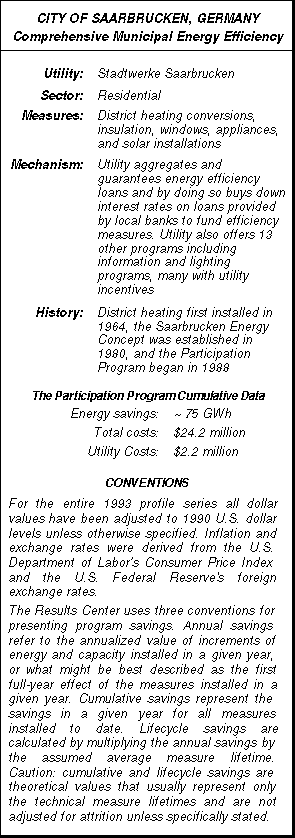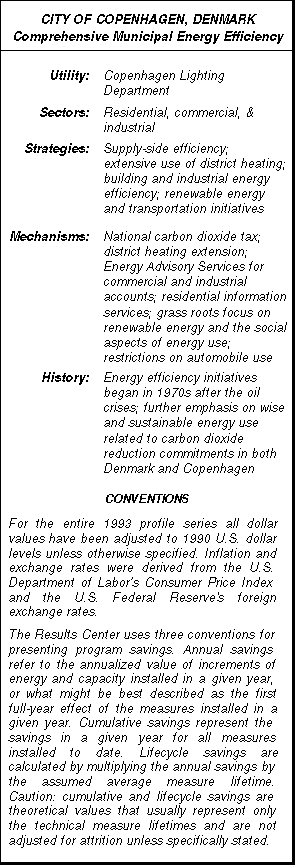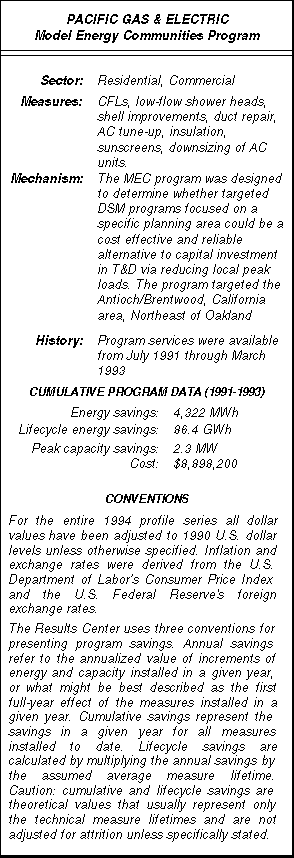EXECUTIVE SUMMARY
 Saarbrucken is located in the Saar River Valley along the French border in the heart of Germany’s coal country, adding a healthy touch of color and irony to Saarbrucken’s extraordinarily progressive energy platform. Despite the fact that the City sits on hundreds of years worth of coal, the City and its utility, Stadtwerke Saarbrucken, view coal as a "transitional fuel" which must be replaced with highly-efficient and non-polluting power supplies (through advanced power plants and district heating), energy efficiency, and renewable energy resources. In each of these areas, Saarbrucken has become a European and international leader.
Saarbrucken is located in the Saar River Valley along the French border in the heart of Germany’s coal country, adding a healthy touch of color and irony to Saarbrucken’s extraordinarily progressive energy platform. Despite the fact that the City sits on hundreds of years worth of coal, the City and its utility, Stadtwerke Saarbrucken, view coal as a "transitional fuel" which must be replaced with highly-efficient and non-polluting power supplies (through advanced power plants and district heating), energy efficiency, and renewable energy resources. In each of these areas, Saarbrucken has become a European and international leader.
The basis for Saarbrucken’s success with promoting efficiency has been its financing program called The Participation Program. This program provides positive monthly cash flow for participating customers while shifting the burden of the cost of energy efficiency from the utility’s balance sheet to consumers. Stadtwerke Saarbrucken works with local banks to aggregate customer loans, then guarantees the loans against default, and by doing so has been able to buy-down loan interest rates for its customers. To date the banks have lent close to $22 million while the utility’s cost of administering the program has been on the order of $2.2 million.
Bolstered by its successful financing program Stadtwerke Saarbrucken has realigned its rate structures and now offers 14 discrete energy efficiency programs that range from consumer education programs to energy conservation diagnostic services and incentive programs. For instance, more than 15,000 information requests are handled annually by the downtown Info-Center E. The Heat Passport Program provides lower electricity rates for customers that can prove low energy intensities. The utility provides rebates for purchasing energy-efficient appliances and incentives for converting from electric to gas water heating. A pilot program is focused on school lighting and school gymnasium lighting retrofits in particular.
Saarbrucken’s efforts with solar energy are also exemplary. In addition to retrofitting each of its community pools Stadtwerke Saarbrucken’s Solar Rooftop Program is intended to install photovoltaic arrays on approximately 1,000 homes throughout the City. To date over 130 systems have been installed. The utility has also invested in a future concept home in Ensheim where the entire roof of the home is covered with photovoltaic panels owned by the utility!
[CLICK HERE TO DOWNLOAD THE ENTIRE 19 PAGE PROFILE IN PDF FILE FORMAT]
This profile was produced by 

 Norway is a country blessed with abundant energy resources, awash in hydroelectricity, or what Norwegians call "the clean energy," as well as North Sea oil and gas. Norway’s energy self-sufficiency is the envy of many other energy-strapped countries. What makes this profile so intriguing is that Oslo Energi and the City of Oslo have pioneered the use of an innovative revolving fund to promote energy efficiency that may well become an internationally-acclaimed model for the finance of energy efficiency, but which ironically has been generally underutilized in Oslo itself.
Norway is a country blessed with abundant energy resources, awash in hydroelectricity, or what Norwegians call "the clean energy," as well as North Sea oil and gas. Norway’s energy self-sufficiency is the envy of many other energy-strapped countries. What makes this profile so intriguing is that Oslo Energi and the City of Oslo have pioneered the use of an innovative revolving fund to promote energy efficiency that may well become an internationally-acclaimed model for the finance of energy efficiency, but which ironically has been generally underutilized in Oslo itself. Copenhagen is a leading city in terms of energy efficiency, and like other European leaders profiled by The Results Center, its efforts have been broad and have spanned supply-side efficiency, the aggressive promotion of district heating, energy efficiency initiatives, renewable energy developments, and transportation. Together these efforts are providing a framework for Copenhagen’s commitment to carbon dioxide reductions and to decreasing its dependence on foreign energy supplies. In fact, in 1991 Denmark as a whole became self-sufficient in its oil and gas use as compared with 1973 when it imported 100% of its oil.
Copenhagen is a leading city in terms of energy efficiency, and like other European leaders profiled by The Results Center, its efforts have been broad and have spanned supply-side efficiency, the aggressive promotion of district heating, energy efficiency initiatives, renewable energy developments, and transportation. Together these efforts are providing a framework for Copenhagen’s commitment to carbon dioxide reductions and to decreasing its dependence on foreign energy supplies. In fact, in 1991 Denmark as a whole became self-sufficient in its oil and gas use as compared with 1973 when it imported 100% of its oil. Pacific Gas & Electric’s Model Energy Communities (MEC) Pilot program, what has been commonly called "The Delta Project," was a research initiative that not only serves as a model for a new and innovative form of demand-side management, but which also has provided a host of important lessons learned. The project was conceived to test the opportunity to use DSM as a localized least cost resource, thereby deferring the need for the capital expansion of transmission and distribution systems.
Pacific Gas & Electric’s Model Energy Communities (MEC) Pilot program, what has been commonly called "The Delta Project," was a research initiative that not only serves as a model for a new and innovative form of demand-side management, but which also has provided a host of important lessons learned. The project was conceived to test the opportunity to use DSM as a localized least cost resource, thereby deferring the need for the capital expansion of transmission and distribution systems.